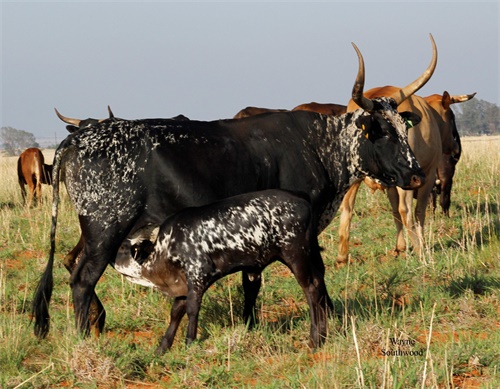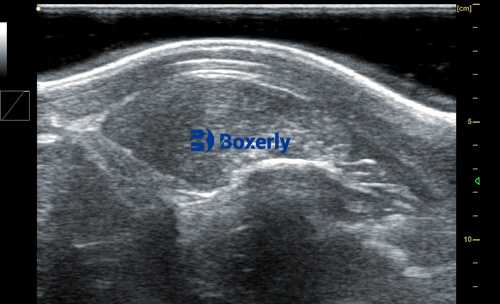Anyone who works with cattle understands that growth monitoring isn’t just about weighing animals. It’s about understanding their muscle development, fat accumulation, and skeletal growth to make better decisions on feeding, Nuôi, and marketing. Ultrasound technology, especially in veterinary practice, has become a game-changer in this field — offering a non-invasive way to peek inside the animal and track growth progress with real precision.

Why Keep Track of Cattle Growth?
Whether you’re raising beef or dairy cattle, growth monitoring is essential. It helps:
- Optimize feeding strategies based on the animal’s current growth stage
- Decide the best time for fattening and slaughter
- Improve genetic selection by identifying animals with superior muscle growth
- Detect health issues early, like growth delays or abnormal fat distribution
In traditional settings, farmers mostly rely on weight scales or visual appraisal, but these can be misleading. That’s where veterinary ultrasound steps in.
How Ultrasound Works in Cattle Growth Monitoring
Ultrasound creates real-time images of the animal’s internal tissues — muscle, fat, bones — by sending sound waves through the body and capturing the echoes. Nó an toàn, painless, and can be performed regularly to track growth trends.
Key Measurements Using Ultrasound
| Parameter | What It Measures | Why It Matters |
|---|---|---|
| Eye Muscle Area (EMA) | Cross-sectional area of the Longissimus dorsi muscle | Indicator of muscular development and meat yield potential |
| Subcutaneous Fat Thickness | Fat layer under the skin, typically measured over ribs or rump | Shows readiness for market and overall fatness |
| Intramuscular Fat (Marbling) | Fat within muscle fibers | Correlates with meat quality and tenderness |
| Rump and Rib Fat Depths | Fat thickness at specific body points | Helps evaluate fat deposition patterns over time |
Understanding Growth Patterns
Cattle don’t just grow steadily. Their growth follows a classic S-shaped curve:
- Slow initial growth right after birth
- Rapid growth through juvenile and puberty phases
- Slowing growth as they near full maturity
Ultrasound helps pinpoint these phases by showing muscle size changes and fat accumulation rates. For example, the eye muscle area grows quickly during youth, but eventually levels off when the animal shifts focus from muscle to fat deposition. Knowing this helps decide if the animal should go into finishing feed or be sent to slaughter.
Muscle and Fat Develop in a Sequence
From a biological perspective, tissue development follows a clear order:
- Nervous system
- Skeletal system
- Muscular system
- Adipose (fat) tissue
Ultrasound allows us to watch muscular and fat development in real-time, helping tailor nutrition programs to where each animal currently is on this timeline. This precise management reduces feed waste and improves meat quality.

Practical Benefits of Ultrasound on the Farm
It’s not just about science. Ultrasound makes a real difference on the ground:
- Non-invasive: No stress or harm to animals.
- Frequent monitoring: You can track growth regularly without discomfort.
- Accurate data: Helps make informed decisions on breeding, feeding, and marketing.
- Real-time feedback: See muscle or fat changes as they happen.
How Breed and Nutrition Impact Growth Monitoring
Different breeds have their own growth rhythms. For example:
- Early-maturing breeds like Angus tend to peak muscle growth sooner and fatten earlier.
- Late-maturing breeds like Charolais keep growing muscle longer and gain fat more slowly.
Nutrition plays a big role too. High-protein diets speed muscle growth early on, while energy-dense rations later encourage fat marbling and thickness. Ultrasound helps make sure feeding strategies match the animal’s genetic potential and current stage.
Putting Ultrasound Data to Work: Decisions on Feeding and Slaughter
With regular ultrasound scans, producers can decide:
- If the animal needs more time on finishing rations to increase fat cover
- When the animal is at its optimal market weight
- Which individuals to prioritize in the herd for breeding or sale
This cuts down on guesswork, improves uniformity among finished cattle, and boosts overall farm profitability.
Sample Ultrasound Growth Data from a Cattle Herd
| Age (Months) | Average Weight (kg) | Eye Muscle Area (cm²) | Subcutaneous Fat Thickness (mm) |
|---|---|---|---|
| 6 | 210 | 40 | 2 |
| 12 | 350 | 70 | 4 |
| 18 | 480 | 90 | 8 |
| 24 | 600 | 92 | 14 |
Final Thoughts
Modern cattle growth monitoring is about more than just numbers on a scale. It’s about understanding muscle, fat, and bone development to make smarter decisions that boost animal welfare and farm profits. Ultrasound technology opens a window into this process, offering clear, objective data without disturbing the animals.
As more livestock producers embrace ultrasound monitoring, expect the cattle industry to become more efficient and quality-focused. Whether you’re a small-scale farmer or a large beef operation, leveraging ultrasound for growth monitoring can provide the edge needed in today’s competitive market.